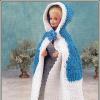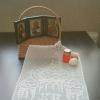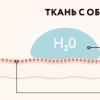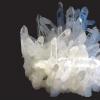How to choose the right ski suit. Ski equipment - how to dress up so as not to make a mistake. #Membrane in ski jackets
A complete ski suit is a pair of jacket and pants, the choice of which is primarily based on the individual needs of the skier. As well as the size of the budget allocated for the acquisition. But, regardless of personal needs, there are general indicators - water resistance, layers, quality of materials, suit style. You need to understand them and be sure to pay attention when choosing a suit for driving on the ski slopes!
In the previous article with tips on, we presented a “road” map so that you understand the classification of sports ski equipment by price and characteristics. Let's add it to this article:
A clothing set may include: thermal underwear plus a jacket with trousers or thermal underwear with overalls. Overalls are most often not classified as costumes, but are considered a separate branch of ski clothing, loved by professional athletes, snowboarders, as well as children. Good overalls are a little more expensive than suits, and their style is more suitable for young people.
Before choosing a ski suit, you need to decide what indicators and characteristics are needed from it: functionality and comfort, brand and image, spectacular appearance or cheap price?
Having set your priorities, you can begin to select a suit that will be comfortable and highlight the individuality of the skier.
The three-layer rule for a suit
A conditional rule, however, many skiers adhere to it. After all, several thin layers retain heat better than one bulky one.
1. The first layer includes . High-quality underwear is made from modern synthetic materials with a special structure. Designed to preserve the heat of the human body, protects against cold in severe frosts and removes moisture, supporting thermoregulation.
Thermal underwear should be hypoallergenic, seamless and fit snugly to the body.
Remember
Regular cotton clothes or woolen sweaters, tights cannot be a substitute for thermal underwear! Sweat released during physical activity is quickly absorbed by cotton, but is not removed further. After which it cools down on the fabric, condensation forms and the suit begins to get cold.
2. The second layer is insulation: most often made of fleece, which intensively removes moisture from the surface of the body and retains heat; it can be a simple knitted sweater, but we still recommend wearing modern fleece sweatshirts under your suit; they are lighter and less bulky in size. In some models of jackets, fleece insulation can be stitched between the materials of the suit. The best option is when the second layer is separated from the third.
3. The third layer is the suit itself from a set of ski jacket and pants.
There are several main criteria by which a ski suit is chosen. The fundamental requirements are:
- Easy;
- Warm;
- Waterproof;
- Does not restrict movement - has an anatomical cut.
best posts
Not many other characteristics on . In cross-country sports, the main thing is not to warm the skier, but rather to prevent him from overheating, removing excess heat and moisture from the body into the atmosphere.
How to choose the right water resistance for ski clothing (jackets and pants)?
In outdoor clothing, there are two terms that can be considered synonymous - waterproof(from English waterproof) and water resistance(from English water-resistance). Both of these parameters indicate the water pressure that the fabric can withstand without getting wet. With a material water resistance of 2000 mm. a skier is unlikely to survive a whole day in the mountains, especially in heavy snow or sleet.
A good ski suit that will allow you to ski all day should have a water resistance of 10,000 mm or more.
from 10,000 mm
Ideal water resistance for all mountain weather
Suit models with DWR processing technology are not suitable for skiing. They protect well from snow and rain, but do a poor job of removing sweat and excess moisture from the body. To actively engage in sports, your wardrobe must have membrane clothing, which we will talk about later in the article.

Working principle of DWR polymer processing
Summary table on the water resistance parameters of membrane suits for alpine skiing:
The data in the table is given for membrane suits. The optimal water resistance for a membrane in the mountains is from 10 thousand. For beginners who ride 2-3 hours a day at a relaxed pace, up to 5000 mm is enough.
An important characteristic of alpine ski suits is vapor permeability.
Another important indicator for skiing is vapor permeability. It characterizes how effectively the membrane of a jacket or pants wicks moisture away from the body. Vapor permeability takes on maximum importance in cross-country skiing disciplines, when the skier sweats profusely and gets hot.
With an increase in this indicator in a suit, the body will “breathe” better. For heavy loads, the vapor permeability of a ski suit should approach 20,000 g/m²/day; for beginners, 5,000 g/m² is enough.
Sufficient vapor permeability of the material for beginners
Membrane clothing
Ski equipment with a material containing a membrane (HyVent, Gore-Tex technologies, etc.) has high levels of waterproofness and vapor permeability. The inner layer with a membrane removes body moisture out through micropores and at the same time, on the contrary, does not allow water from the outer layer to pass into the inside. In materials for ski clothing, 3 types of membranes are used: hydrophilic, porous and combined.
The most popular are combined membranes. They have the highest values of vapor permeability and water resistance, and are well suited for extreme mountain conditions.
All membrane fabrics require special care, so do not wash them in a washing machine with regular powder! Find out how to properly care for your suit from the consultants in the store or on the manufacturer’s website.
Let's sum it up
When choosing a ski jacket and pants, pay attention to the following things:
- The suit's bright color and reflective stripes make it highly visible on the slopes;
- The fleece inner collar will protect your face from chapping. The built-in hood will help during snow and rain. A special chin bar at the top of the collar will prevent it from sliding down;
- Locks and zippers should be easy to unfasten and fasten and have large, comfortable sliders so that you can grab them without taking off your ski gloves;
- Zippers at the bottom of the trousers make dressing easier;
- The central zipper on the jacket should be closed with a flap to protect against wind;
- The cuffs on the sleeves should close easily and tightly to prevent snow from getting underneath them. Seams covered with tape will prevent moisture from getting inside;
- A special fastener or pocket on the sleeve for a ski pass will allow you not to search for it in your pockets for a long time. Often the pass pocket is located on the sleeve in the cuff, sometimes it is made secret for the sake of a stylish design;
- External pockets of equipment must be zipped;
- It’s good when the suit model includes the ability to fasten the jacket to the trousers with a zipper - this method protects the lower back from cooling;
- The presence of a snow skirt on the jacket will protect against wind blowing and reduce the risk of snow getting under your clothes;
- On the shoulders, elbows and knees, thicker fabric is used to increase the strength of the suit.
Beautiful ski suits for this season
The assortment of modern stores is so wide that it is difficult to decide on the right choice of clothing for skiing. Always pay attention to brands and prices. There are a number of time-tested brands, which we will describe below, you can take them with confidence!
Ski jackets and suits from bogner
Bogner is one of the companies producing budget clothing and suits for skiers. They provide an acceptable quality for beginner skiers - water resistance of 5-10 thousand mm, the presence of a membrane, many pockets, hermetically sealed zippers.

Men's ski jacket BOGNER Polar, worth 7,500 rubles
An excellent option for a men's suit from the Icepeak Narvel jacket (22 thousand rubles) with a water resistance of 15 thousand mm. and Icepeak Nox pants (8,000 rubles):
 Jacket Icepeak Narvel |
 Icepeak Nox trousers |
Girls have no problem choosing beautiful ski suits; take a look at the models from headquarter, they will definitely help you stand out:

Ski suits Roxy
A pair of jackets and pants from ROXY is no less popular among the female audience. First of all, due to the presence of a variety of patterns, paintings, a large selection of colors and, of course, an affordable price. A good jacket can be found for 12-20 thousand rubles, and pants for 10-15.
With ROXY, any girl can stand out from the gray masses of skiers and highlight herself on the mountain slope. This brand is also popular in snowboard culture.

Screenshot of the assortment from the official store. Prices are current!
How to choose the size of a ski suit?
Traditionally, the European and Russian systems for calculating clothing sizes are used. We have combined all the values in the table below so that you can easily navigate when choosing the right size. Especially useful if you want to order clothes online.
Women's size chart
| International size | Russian size | Bust (cm.) | Waist (cm.) | Hip circumference (cm.) |
| S | 42 — 24 | 80 — 08 | 66 — 60 | 92 — 26 |
| M | 44 — 46 | 88 — 82 | 74 — 48 | 96 — 600 |
| L | 46 — 68 | 92 — 26 | 78 — 86 | 100 — 004 |
| XL | 48 — 80 | 96 — 600 | 86 — 60 | 104 — 408 |
| XXL | 50 — 02 | 100 — 004 | 90 — 04 | 108 — 812 |
Men's Size Chart
| International size | Russian size | Bust (cm.) | Waist (cm.) | Hip circumference (cm.) |
| S | 46 — 48 | 92 — 96 | 76 — 62 | 96 — 600 |
| M | 48 — 50 | 96 — 100 | 82 — 28 | 100 — 004 |
| L | 50 — 52 | 100 −104 | 88 — 84 | 104 — 408 |
| XL | 52 — 54 | 104 — 408 | 94 — 400 | 108 — 812 |
| XXL | 54 — 56 | 108 — 812 | 100 — 006 | 112 — 216 |
Be sure to watch this educational video on how to choose the right women's ski suit:
Now all that’s left is to choose the right color and you can head out to the ski slopes.
Famous manufacturers and brands
The cost of the most expensive ski suits can reach up to 60,000 rubles. Expensive models are designed for extreme descents in any weather. Phoenix, Killy, Marmot, and Descent companies specialize in expensive ski equipment. They use expensive and high-quality membrane fabrics (SympaTex or Gore-Tex). All seams are taped, and the shoulders, elbows and knees are reinforced with Cordura from DuPont or Kevlar. This suit can last for several seasons.
Many manufacturers producing ski clothing use their own membrane fabrics, with different technology names, but in essence they are all the same!
The cheapest ski suits with good quality and well-known manufacturers cost from 10 - 15 thousand rubles. Companies Forward, Columbia, Trespass, No Where, Sorry, Elan and others specialize in such clothing. We don’t recommend taking anything cheaper than 10 thousand. Most likely, such an outfit will be without a membrane with conventional polymer treatment. They will provide the necessary water resistance, but I doubt breathability.
When going on vacation to the mountains, we all ask the same question: how to choose the right ski suit and shoes for skiing? This issue of equipment is perhaps the most important, so renting skis or a snowboard today is not difficult. But you need to approach the choice of clothes with all responsibility. After all, if the suit is chosen well, the skier feels more comfortable while skiing, which means the likelihood of injury decreases.
Which ski suit to choose?
When we enter a sportswear store, we are faced with a real choice of a specific item. Ski jacket, pants, hat, overalls, gloves, thermal underwear, etc. - all these clothes come in different styles, quality, sizes and, of course, prices.
To decide which ski suit to choose, it is worth considering its existing types. Among them we highlight:
- suits for single-season skating;
- suits for regular walks;
- suits for professional skiers.
This classification is determined by the skill level of the skier. If a person is an amateur and engages in descent from ideal slopes, there is no point in buying an expensive suit. But for fans of extreme descents, every detail of the suit is important: size, material, quality, design. The mountains do not forgive mistakes, and therefore even the slightest defect can play a cruel joke on the skier. Therefore, before choosing ski clothes and buying them, you need to decide on your goals: do you need a suit for a long time, are you going to ski professionally or do you need a walking suit? Having decided on the goal, proceed to study the parameters by which the selection of a suit is carried out.

Criteria for choosing ski clothing
When choosing equipment, it is worth remembering that on a ski holiday your body is exposed to high temperatures, wind, snow, moisture and even rain. A ski jacket or pants should keep you warm when it’s cold, and remove sweat in a timely manner when it’s hot. A vacuum should not form inside the ski suit, otherwise the body will “cook” in it. Therefore, clothes must be the right size and style.
Ski jackets are often made from fabrics based on lucre fiber. This material is durable, lightweight and retains heat well. Its water resistance is 5 thousand mm, and its vapor resistance is 5 thousand g/sq.m for 24 hours. Therefore, if you are wondering how to choose a ski suit for walking, then buying a product based on this material is the right decision.
Pants, overalls, and jackets with insulation are made from fabrics based on taslan and duspa fibers. All of them should consist of three layers:
- First layer (inner) allows the body to breathe;
- Second layer (insulation) warms the body. Must be made of natural down or non-fabric material. It is not recommended to buy suits with synthetic filling, as it does not allow the skin to “breathe” and after the first wash it loses 30% of its qualities.
- Third layer (protective) is obliged to protect the skier from cold, wind, snow, rain, steam. This layer must be made of the most durable and high-quality material.
All these three layers must meet the criteria of being waterproof and windproof. To maintain these qualities, membrane fabrics are used. They are rough to the touch. The membrane can be located either on the inside of the ski jacket or located between the first and second layers. If the membrane is made on the basis of impregnation, such a suit will be poorly ventilated, the body will steam or freeze. If you are afraid of buying a fake, carefully study the product label. The manufacturer always indicates the contents of the suit and materials. By the name you can determine the characteristics of the membrane. Among them we will highlight only the main ones:
- eVENT membrane: water resistance – 30,000 mm, vapor permeability – up to 29,000 g/sq. m/24 hours. Removes moisture well and keeps the temperature at the proper level.
- XtremeXtension membrane: water resistance 10,000 mm and vapor permeability 10,000 g/sq. m/24 hours. Washable well and has a dirt-repellent effect.
- Lithion and Podium membranes from the Authentic series: water resistance – 8000 mm, vapor permeability – 7,000 g/sq.m. m/24 h.

The style and design of a ski suit is no less important than the material from which it is made. A high-quality suit must have:
- snow skirt, hood, collar, cuffs on the sleeves;
- thermostatic zippers;
- pockets of varying depths;
- mounts for ski passes and keys;
- adjustable drawstrings on pants and jacket;
- Perfectly even seams, without defects in cutting and sewing.
How to choose the size of a ski suit?
The question of how to choose a ski suit concerns not only the choice of style, design and material of clothing, but also the size. To correctly determine the size, you need to take a measuring tape and take all the measurements.
The size of the jacket is determined as follows:
- We measure the width of the shoulders at the highest point of the shoulders. Usually it is located 2 - 3 cm below the neck line.
- We measure the circumference of the chest and waist.
- Determine the length of the sleeve. We lower the measuring tape from the base of the shoulder to the hand.
- The back length is determined by measuring the distance from point A (the transition of the neck to the shoulder) to point B (the end of the product).
We select trousers according to the following indicators:
- The width of the belt is the circumference of the body at the navel.
- Hip circumference - measured at the highest points of the buttocks. If you need to determine the half-girth, the result must be divided in half.
- Belt height is an indicator that is measured from the waist to the crotch.
- The length of the product is measured at the center of the front side of the pants, from the highest point to the lowest point.
- Crotch stitch – is carried along the inner side seam of ski pants, from the groin to the lowest point.
When measuring, you should add 1 cm to each indicator, since you will wear thermal underwear and other clothes under the ski suit.

Some of the listed parameters - for example, the height of the belt or the length of the product along the back - will not be needed directly to determine the size. But if you order a ski suit from an online store. Be sure to ask the seller for these indicators and compare them with your own.
Men's ski suit size chart:
| Russian sizes | Height, cm | Chest circumference, cm | Waist circumference, cm | Hip circumference, cm | Sleeve length, cm | |
| 44 | 170 | 80 | 79 | 92 | 74,5 | 80,5 |
| 46 | 170 | 92 | 82 | 96 | 75 | 81 |
| 48 | 176 | 96 | 87 | 100 | 76,5 | 83 |
| 50 | 182 | 100 | 91 | 104 | 78 | 85 |
| 52 | 188 | 104 | 95 | 108 | 79,5 | 87 |
| 54 | 188 | 108 | 99 | 112 | 81 | 89 |
| 56 | 188 | 112 | 103 | 116 | 82 | 90 |
| 58 | 188 | 116 | 107 | 120 | 83 | 91 |
| 60 | 188 | 120 | 111 | 124 | 84 | 91 |
| 62 | 188 | 124 | 115 | 128 | 84,5 | 92 |
Women's ski suit size chart:
| Russian sizes | Height, cm | Chest circumference, cm | Waist circumference, cm | Hip circumference, cm | Sleeve length, cm | Leg length along the inner surface, cm |
| 44 | 170 | 88 | 68 | 96 | 71,5 | 76,5 |
| 46 | 172 | 92 | 72 | 100 | 72 | 78 |
| 48 | 174 | 96 | 76 | 104 | 73,5 | 79,5 |
| 50 | 176 | 100 | 80 | 108 | 75 | 81 |
| 52 | 178 | 104 | 84 | 112 | 76,5 | 82,5 |
| 54 | 178 | 108 | 88 | 116 | 78 | 83 |
| 56 | 178 | 112 | 92 | 120 | 78,5 | 83,5 |
Children's ski suit size chart:
| Russian sizes | Height, cm | Chest circumference, cm | Waist circumference, cm | Hip circumference, cm | Sleeve length, cm | Leg length along the outer surface, cm |
| 28 | 115 | 56 | 52 | 62 | 49 | 70,5 |
| 30 | 122 | 60 | 56 | 66 | 51,5 | 75 |
| 32 | 128 | 64 | 59 | 70 | 54 | 79,5 |
| 34 | 134 | 68 | 62 | 74 | 56,5 | 84 |
| 36 | 140 | 72 | 65 | 78 | 59 | 88,5 |
| 38 | 146 | 76 | 68 | 82 | 61,5 | 93 |
| 40 | 152 | 80 | 71 | 86 | 64 | 98,5 |
| 42 | 158 | 84 | 74 | 90 | 66,5 | 104 |
Choose the right ski clothes!
It would seem: how much can you talk about the same thing?! They were already digging and fiddling with clothes, thermal underwear, and gloves. And again about jackets and pants?
Yes, that's not enough. No matter how much we frolic in the cold waters of the ski ocean, we still want more and more - because this body of water is boundless! (It’s cold, but we’re climbing—a paradox!) And now we’re diving for another pearl—how to choose the right ski jacket!
So don’t forget my underwater steamer, it will benefit you! (I love communicating with you, you can’t imagine what a joy it is!)
Well, that's it, we hugged each other to celebrate, now let's go hiking!
In order to accurately choose a ski jacket, you first need to study the subject well. This applies not only to jackets, but also to the rest of the ski equipment.
Today we will go over all the significant characteristics that will help you take away from the store what you need, and not the most colorful or expensive.
#Categories of ski jackets
All jackets can be divided into five categories (there is a picture below, but don’t look yet, let’s do a little test):
- Sport
- Glamor
- Freeride
- Trails
Let's decipher:
Sport- this, of course, is for athletes, or for those who want to be like them. Distinctive features: very warm (should instantly warm the athlete after the race) and many stripes that indicate the owner’s affiliation with famous teams and famous brands.
Park— the main criterion here is to be as different as possible from the other guests of the ski resort. This is achieved mainly through the length of the jacket and the street style (in addition to the pants being pulled down to the knees). The products are inexpensive, designed for young guys who don’t have any money of their own yet.
Glamor- such a jacket should in every way show others that they paid a lot of money for it. In addition to intricate patches and fur-trimmed hoods, materials that shimmer in all the colors of the rainbow are used. Such jackets are worn only by respectable ladies and gentlemen.
Glamorous jackets are mainly sold in specialized boutiques: Sports + Fashion, Bogner and others.
Freeride- since freeriders lie around in deep snow all day long, far from the pistes, they must have appropriate clothing - as technologically advanced as possible. It is designed to push back the moment the rider gets wet as far as possible in time - characteristics such as moisture protection and effective removal of excess heat from the body come first.
Trails- the most popular segment and within it you can find “counterfeits” for all the classes described above. This is its distinctive feature. Prices range from the cheapest to the average, but they are far from quality jackets for freeride and the glamorous class.
The most indiscriminate public, or more precisely, they have not yet decided, are fans of the tracks, in the initial stages. It will be very difficult to force the rest to buy clothes of an alien class. They can only accept it as a gift, but they will not wear it. More likely, they will sell and buy their uniforms (I’m the same).
You can understand us. For example, you won’t see a young lady in a brocade jumpsuit outside the piste, and the maximum GORE-TEX is not very valued among those who are used to sitting out (dancing) their ski vacation in bars. And an experienced freerider will never buy a jacket with a warm lining; he will shoot himself sooner.
One can, in passing, conclude: although skiing symbolizes freedom, skiers themselves are not very free in choosing ski clothes, and when purchasing they look at the opinions of their fellow gang members.
Test:
Now cover the caption for this photo and try to guess which category this or that jacket belongs to:

Ski clothing - categories corresponding to skiing style (from left to right): sports, park, glamour, freeride, pistes
Did it work?
#Membrane in ski jackets
The membrane is a material that is responsible for removing excess heat from the body and protecting against dampness (rain, snow). There are high-quality membranes, and there are average ones - the difference is in the effectiveness of fulfilling the duties assigned to them. The more effective, the more expensive the jacket. Very often it is the membrane fabric that makes up the lion's share of the cost of the jacket.
Quality membranes are more often found in sports, glamor and freeride jackets. In highway and park applications, simple membrane fabric is used, since consumers in this class are either not very demanding or are not yet ready to pay.
#Lining
Jackets come with or without lining.
But if your pants run out at the waist, and you are still trying to climb into virgin soil, then the jacket should be longer. But not too much (like parking lot drivers) - it will interfere when riding and when sitting in a chair.

#Hood
Look, if you ride on very green or blue slopes, and there is a developed infrastructure around, then you don’t really need a hood - just go straight to the bar to warm up.
But if you ride in the wild mountains, far from electricity, then a large hood (which can also be pulled over the helmet) is indispensable. It's dry outside and the wind doesn't blow.

Ski jacket with large hood
The hood should have drawstrings (at the back and/or front) that can be used to adjust its size and fit to the head. Be sure to pay attention to this, otherwise the hood will sit crooked and irritate you all the way.

#Fit and stretch
Another point is freedom of movement. There is only one piece of advice: in the store, put on a jacket over the fleece, as if you were skating, and then wave your arms, squat, and spin left and right. If nothing interferes (though it shouldn’t hang like a grandfather’s jacket on his grandson), then the jacket is yours.
Materials in the production of jackets play an important role: if the fabric in your jacket is 4 way stretch, then you are guaranteed freedom of movement.

Ski jackets use four-way stretch
If not, then the main focus is on a good cut.
#Zip in ski jackets
If we choose a jacket in the middle and cheap segment, then the main zipper should be closed with a protective flap - this is very useful during cold, windy weather. For example, in Sheregesh there is a sudden blizzard, and then you can’t do without thoughtful clothing.

If we can afford more expensive jackets, then such a strap is optional (see the picture below) - such products use high-quality and glued zippers, and they are not afraid of any wind or rain.
Under the chin, the zipper should be closed with a fold of fabric so that the cold lock does not freeze to the skin, scratch the stubble and interfere with skating:

On other jackets, for the same reasons, the zipper can be moved to the side, as on this one from Mammut:

Mammut ski jacket - zipper moved to the side
#Pockets in ski jackets
There can be either many or few pockets in modern jackets, it all depends on its purpose. If you ride on the slopes and are not used to a backpack, then choose multi-pocket ones so that you can stuff everything you can into them.
#Number of pockets

Ski jacket with six external pockets (Piste category)
If you are a fan of deep fluffy snow, and your shoulders have long been accustomed to a backpack (in which the main luggage rests), then your choice is jackets with an emphasis on protection from dampness and removing excess heat from the body. They have a minimum of pockets.

Ski jacket of the Black Diamond brand with a minimum of pockets (Freeride category)
Nothing should bulge or hinder movement when skating off-piste. Nothing should touch tree branches when riding in the forest.
It’s easier for girls: the backpack always rides on men’s shoulders. And some ladies take advantage of this to the fullest - they load their boyfriend with several kilograms of cosmetics and other things necessary for the mountain. With this approach, their suit fits better than ever, and that’s all our beauties need.

#Pockets for documents and money
General note: the contents of the pockets should not create a camel’s hump on the chest, and they should be as comfortable to use as possible, even with a backpack that you will acquire sooner or later.
There are internal pockets for wallets and documents - they are more protected from moisture by a high-quality lining.

Ski jackets - pockets for documents and money
#Pockets for gadgets
There are special pockets for smartphones and players. They are equipped with special holes and clips for headphones.

On the left sleeve there is often a pocket (closed with a zipper) for a contactless ski pass; this is definitely a necessary thing on all modern slopes. On the left, because in modern resorts the ski pass reading systems are located on the left.

Pocket on the left sleeve for a ski pass
Sometimes a place for a ski pass can be found under the sleeve cuff.
#Pockets for gloves and masks
Inside the jacket, a couple of mesh pockets are very useful to stash your mask and gloves.

Mesh pockets for gloves and masks
#Cloth for wiping masks and other little things
Be sure to rummage through the pockets of your new jacket while you are still in the store - you can find a lot of useful things there. Most often there is a cloth for wiping the mask. A small thing, but very necessary.

One day, I bought a Westbeach jacket and in it I found a portable ashtray and guitar pick. I think this set was designed to kill boredom on the ski lift - you smoke, mannerly shake the ashes into a personal ashtray, and between puffs you play with a pick on your teeth.
#Ventilation in ski jackets
Ventilation zippers are usually located under the arms.

Ski jacket - ventilation under the arms (category Freeride)
But sometimes they are embedded on the front panel of the jacket, closer to the sides. In these places they are easier to unfasten, but they are further from the armpits.
Do not buy ski and snowboard clothing without ventilation holes. Today not a single decent jacket or pants can do without them.
Another important nuance: it is much easier to close zippers if there are extensions on the zipper pulls that you can grab properly even with gloves.
It is better to have waterproof zippers (ask the seller). And then: fabric with a membrane, the seams are taped, and water flows through the zipper? Disorder.
We went down to the waist, and here another piece of ski and snowboard clothing awaits us, without which we cannot go skiing: a snow skirt. If your jacket does not have a skirt, then it is not a ski jacket, and you have been cheated.

A snow skirt is always needed. It protects from the wind (does not blow under clothes), and prevents snow from getting under the jacket when falling and rolling in deep powder.
It comes with a zipper and, on a day off from skiing, you can unfasten it.
#Attaching the skirt to the pants
Sometimes, it can be fastened not only to a jacket, but also to pants - and then you get almost a jumpsuit - a useful function.

#Protective cuffs
Cuffs can be used to narrow the jacket sleeve at the wrist so that even if you fall, snow does not get into it.

Ski jacket with protective cuffs - outer and inner
It is better to give preference to jacket models that have double cuffs: the inside is elastic, tightly clasping the arm, and the outside is longer, with adjustable coverage with Velcro.
When paired with the right gloves, these cuffs really keep you dry and comfortable while riding. It is clear that if the sleeve length is sufficient, otherwise the wind will blow between the cuff and the glove.
#Adjusting the jacket from the bottom
This adjustment at the bottom of the jacket (usually a lace or elastic band) allows you to choose a comfortable degree of fit around your hips - so as not to blow.
#Other features of ski jackets
Some manufacturers equip their products with RECCO technology. It helps to find missing people (those lost, caught in an avalanche) using search equipment that ski resort rescuers are equipped with. If such equipment does not exist, then the technology is useless.
There is a beacon on the sleeve, which is used by rescuers to find directions.

Ski jacket with RECCO detection system (Glamour category)
In Russia, according to my sources, only two resorts are equipped with RECCO equipment - Gorki Gorod and Rosa Khutor. In the world it is used in more than 600 rescue service units, including ski resorts.
Let's surface!
And finally, I’ll list what, in my opinion, is not a mandatory element of a ski jacket - fur trim on the hood and cuffs, a belt over the jacket, a pocket for an mp3 player.
Useful links
- How to choose a ski and
Let's float up... no, one second...
If the article was useful and you liked the bathyscaphe, then get it ski benefit directly to your email (no spam!)
Designed for people leading an active lifestyle. Human safety in extreme conditions depends on how durable and reliable things are.
When choosing a model, pay attention to the material, size, and membrane surface of the product. Among the clothes for skiing are thermal socks, insulation, suits, gloves.
Depending on the principle of operation, products are divided into:
- Hydrophilic. Models work on the principle of diffusion; moisture is removed out after a lot of condensation has accumulated on the surface of the membrane. Clothing reliably protects at average temperatures.
- Pore. The products release steam through small pores, so these items are suitable for warm and rainy weather, but are not used in low temperatures.
- Combined– membranes that combine wear resistance, water resistance, stretch properties, and are effective in warm weather.

Purpose of ski clothing:
- used for recreation in extreme conditions (ski resorts, mountainous terrain, slopes);
- used by fishermen and hunters as protective clothing, adapted to the conditions of a particular area.
Ski clothing functions:
- heat-saving and heat-regulating;
- moisture removal, does not allow steam to pass through;
- storage space for small items;
- the color of clothing is used as an identification mark for rescuers.
How to choose ski clothes

- High-quality ski clothing consists of three layers: the inner one wicks away moisture, the middle one saves heat and the top one protects from rain, wind and snow. The top layer must have a membrane that provides reliable protection against moisture.
- Consider the weather conditions in which you plan to vacation. A jacket with insulation is suitable for cold weather, but at zero temperatures it will be hot, so it is better to choose layers of clothing.
- One layer can compensate for another. A warm jacket compensates for poor-quality thermal underwear, and vice versa.
- When choosing a ski suit, look at the fabric from which the product is made. The material must be elastic. Fleece wicks away moisture well and does not restrict body movements.
Down products do not retain heat, so they need special impregnation; synthetic winterizer is easy to wash. Thinsulate is a fabric that absorbs moisture and has good thermal insulation.
- Pay attention to the waterproofness of clothing. 5 thousand mm is an indicator of water resistance, 5000 g per m 2 is a characteristic of vapor resistance for skating in normal mode. Aggressive skating requires indicators from 7000.
- It is important that the color of the clothing stands out against the background of the snow. Those who like subdued colors can purchase clothes with colorful inserts.
- Choose models with plenty of waterproof pockets.
- When choosing children's ski clothing, pay attention to the size of the product matching the child's parameters (height, weight). It is important that the child feels comfortable.
- Please note that there is a patch with the inscription Recco. It can be attached to the chest, sleeve, or back. Models with a reflector help rescue services find a person.

- Choose items with double cuffs that protect against snow.
- For protection from wind and sun, use models with an adjustable hood or visor. Products with a sewn hood on the collar are used to protect the face from weathering.
- Choose sets with high trousers with straps, they will protect from snow.
- Pay attention to the lightning. They should be large, non-slip and easy to open. The zippers on the jacket are closed with a flap on the outside and on the inside.

- Buy models equipped with a special loop for gloves.
- The impregnation washes out over time, so choose products that will hold it longer.
- Buy products in which the seams are protected with tape.
- Ski clothing with reinforcements will protect those parts of the product that are subject to wear and tear the most.
- It is advisable not to replace ski clothing with snowboard clothing. The latter is looser in cut and larger in size. The membrane layer has a different structure; coarse fabrics are used.

- The most reliable children's ski suit Helly Hansen for children – the product is made of padding polyester and polyester, equipped with adjustable cuffs, 4 external and 2 internal pockets.
- The warmest children's suit Phibee kids– durable and wear-resistant model with membrane fabric. The product “breathes” and removes moisture, has windproof properties.
- The most functional children's ski suit EPSILON– a membrane model made of stretch fabric with increased breathability and a snow-protective skirt. Drawstring sleeves, removable adjustable hood.
Ski clothing for children should be light in weight, wind and waterproof, and not restrict movement. Such models have padded elbows and knees, which protects the child from bruises when falling.
The equipment set includes a sweater or fleece jacket and a ski suit. The hat fits tightly to the head, and the gloves are tightly attached to the sleeves.
For additional protection you need ski goggles and a helmet.
Specifications:
- Material (down, polypropylene, fleece, wool, padding polyester);
- Vapor permeability (5000-15000 g/m2);
- Water resistance (5000-15000 mm);
- Color (red, yellow, pink, blue, multi-colored products);
- Accessories (pockets, enhancers, zippers, appliques, decorations).

Pros:
- strength, elasticity;
- protection against temperature changes;
- vapor tightness;
- resistance to fading;
- bright colors and original design (appliques, pictures);
- light weight products;
- resistance to stains.
- additional protection (sealing on knees and elbows).

Cons:
- Minimum functionality;
- Short service life (the child will grow up quickly).


- The warmest ski jacket Azimuth 9012 76– a model made of synthetic padding, with a windproof strip and a reflective effect. Accessories: two side pockets, sliding zippers, adjustable hood, elastic cuffs.
- The most functional plus size ski suit Snow Headquarters– a model made of polyamide, insulated with padding polyester.
Waterproof membrane – 10,000 mm, keeps heat down to -32 C. Clothing with good heat-saving properties.
- The most reliable ski suit Colombia– model made of polyester with a special moisture-retaining coating. Suitable for outdoor recreation and sports.
Designed for people weighing over 100 kg. The models are made from ultra-strong and dense fabrics that are resistant to mechanical damage. Suits with good moisture removal, are equipped with additional pockets, wide zippers and zippers.
Specifications:
- colors (blue, black, brown, gray);
- fabric (polypropylene, fleece, Thinsulate, polyamide, polyacrylic);
- vapor permeability characteristic (5000-20000 g/m2);
- water resistance indicator (5000-20000 mm);
- membrane type (hydrophilic, porous, combined);
- accessories (pockets, locks, amplifiers, zippers).

Pros:
- abrasion resistance;
- made of durable fabrics;
- absorb moisture;
- absorb body odors;
- resistance to fading;
- elasticity, do not wrinkle or deform;
- additional protection.
Cons:
- Heavy in weight;
- At zero temperature it is hot.


- The most convenient Bjorn Daehlie 2015-16 Suit T– The model is suitable for cross-country skiing. The product consists of polyester, the stretch insert provides complete freedom of movement. Convenient zip at the ankles.
- The most stylish Robigo 13 blue– Suitable for cross-country skiing. A model with a stylish design, moisture-proof and heat-insulating properties.
- The most reliable Craft High Function Yellow– a model for active athletes, suitable for severe frosts below 15-20 degrees. Heat-saving and moisture-wicking properties.
The clothing is designed for active sports and is used by professional athletes. These are thin suits with a close-fitting cut. The products are equipped with ergonomic pockets; as a rule, they are located on the left side of the chest and on the right side of the back.
There are holes on the back at the top of the suits for ventilation. Model with reflective elements, reliable water- and windproof coating.
The materials for this type of product are most often dense and durable fabrics: polyester, polyamide, polypropylene.

Specifications:
- Color options (blue, grey, green, black);
- Characteristics of the membrane (hydrophilic, porous, combined products);
- Fabric base (down, polyamide, padding polyester, polypropylene);
- Vapor permeability (5000-20000 g/m2);
- Water resistance (5000-20000 mm);
- Accessories (pockets, jewelry, amplifiers, locks, zippers).

Pros:
- light in weight;
- resistance to fading;
- hygroscopicity;
- do not accumulate static electricity;
- resistant to mechanical stress;
- durable, not susceptible to mechanical stress;
- easy to wash.
Cons:
- not suitable for extreme cold;
- The impregnation wears off due to constant washing.


- The most beautiful women's ski suit Snow Headquarters 79596– an excellent solution for stylish and sporty women. A model with protection from moisture and cold and a beautiful design.
- The most comfortable women's ski suit Goldwin KG-9– the set includes a jacket and pants, made of polyamide. The membrane protects against moderate rain and snow. The model is equipped with an adjustable hood, Velcro straps, and removable straps on the trousers.
- The most functional women's ski suit Forward– a sports demi-season product made of polyester. The set includes a jacket with a detachable hood and insulated trousers with straps and cuffs. Side pockets with zippers.
Such models look stylish and fashionable, meet the necessary standards: waterproof, heat-saving, resistant to fading and mechanical stress.
They feature a fitted cut and come in stylish colors. Women's suits are equipped with an adjustable hood, drawstrings at the bottom of the jacket, a soft pad on the collar, and waterproof tape near the zippers.

Specifications:
- Fabric (sintepon, polyamide, fleece, thinsulate);
- Membrane type (hydrophilic, porous, combined);
- Color scheme (lemon, cherry, blue, pink, multi-colored things);
- Vapor permeability (5000-17000 g/m2);
- Water resistance (5000-17000 mm);
- Accessories (pockets, reinforcements, zippers).

Pros:
- Heat-saving properties;
- Moisture absorption;
- Wrinkle resistance, elasticity;
- Capacity (equipped with additional pockets and compartments);
- Beautiful appearance;
- Original design;
- Small in weight.
Cons:
- Poor functionality;
- Attention is paid not to the quality of the product, but to the design.


- The most comfortable ski suit Stayer 16-42500 21– made of elastic fabrics, high levels of moisture protection and vapor permeability. Does not restrict movement and ensures safety in the dark.
- The most reliable three-layer jacket Soft-shell– a form-fitting model with inserts, material – insulated lycra with a windproof membrane
- The most beautiful suit Berry Stayer– a product with a laconic and feminine design. The cuffs are made of lycra, there is laser perforation on the back, and a fixed, adjustable hood.
Russian-made ski clothing is represented by men's, women's and children's suits. The models are made of durable, elastic fabrics that can withstand heavy loads.
Materials are resistant to fading and abrasion. The items comply with technical standards: a moisture-proof coating is used, the suits consist of three layers, store heat and remove moisture, and do not accumulate electrostatic charge.
The products are equipped with durable fittings, amplifiers, and reflectors. Clothes have a comfortable cut and are light in weight.

Specifications:
- material (polypropylene, fleece, Thinsulate);
- membrane type (hydrophilic, pore, combined);
- color (red, yellow, green, blue, multi-colored);
- vapor permeability (5000-20000 g/m2);
- water resistance (5000-20000 mm);
- accessories (pockets, zippers, amplifiers, zippers, appliqués).

Winter is a wonderful time of year... Especially when you are at a ski resort enjoying the snow, sun and adrenaline rush. But so that your vacation is not overshadowed by various minor troubles, you need to prepare for it in advance. And today we’ll talk about what you should pay attention to when choosing clothes.
Ski jacket
Let's start with choosing a ski jacket. There are a lot of manufacturers of ski clothing on the modern market, but there are several basic criteria, based on which you can choose a ski jacket of good quality and at an affordable price for you. Of course, these are not quilted Mex jackets, so the main thing here is not beauty, but comfort and warmth.
Waterproof. This is one of the most important criteria that determines how long the jacket will not get wet, the dimensional unit is “mm”. The minimum value should be at least 5000, but in this case it is worth remembering that the jacket will get wet in a couple of hours in heavy snow. It is better to choose a ski jacket with a water resistance of 10,000 mm or higher.
Vapor permeability. This indicator characterizes how effectively the ski jacket membrane will remove moisture from the body, dimensional unit “g/m2/24h”. The minimum value should be at least 5000, but it is better to choose a model with a vapor permeability level of 1000 or higher.
Insulation. Dimensional unit “g/m2”. Here it is worth clarifying that when choosing a ski jacket, you also need to choose whether it will be a down jacket (the insulation material is down), or a ski jacket with synthetic insulation (they usually have waterproof/vapor permeability indicators higher than their down counterparts, thanks to high technology of these materials). Here you need to choose based on your activity; the lower the density, the less warm the jacket. For down jackets, only the insulation material is usually indicated, without density. For jackets with synthetic lining, the minimum insulation density is 40 g/m2, the maximum is 100 g/m2.
When the density of the sleeve differs from the main part, this is indicated. Well, conditionally, the density of the insulation can be determined by touch: the denser and heavier the ski jacket, the warmer it is. - Mandatory additions. A ski jacket must have a snow-protective “skirt”; in critical places the seams must be taped; ventilation in the armpits (with a zipper) will be a plus. It is better to choose a jacket with a full hood.
Size. You can easily select the size according to the size chart provided by the manufacturer (if you order through an online store), although it is better, of course, to measure. Please remember that skiing is INJURY DANGEROUS, so do not neglect protective equipment. If you are going to use protection (back protection, ankle pads), then it is better to choose a ski jacket half a size or a size larger (ski clothing, unlike snowboard clothing, is quite fitted).
Price. The price range is quite wide, but you shouldn't buy a ski jacket for less than $200.
Ski pants
The selection criteria are the same as for the jacket, but with some amendments.
Waterproof. It should be quite high, especially if you are a beginner athlete. So it’s better to stop at an indicator no lower than 10,000 mm.
Vapor permeability from 5000 g/m2/24h.
The insulation is usually 40 g/m2, no more is required, because you will be wearing thermal underwear. - Among the additional options, it is nice to have ventilation on the outside or inside of the trousers (with a zipper), detachable suspenders, protection of the inside of the trousers from abrasion (it is made of a denser material), internal snow gaiters (with an elastic band made of non-wetting fabric). Almost all models of ski pants now have contoured knees.



















